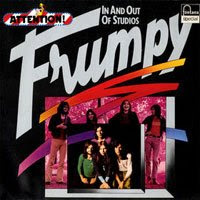
Live LINK:liveTrack Listings1. Keep On Going (12:06)2. Singing Songs (8:54)3. Backwater Blues (4:56)4. Duty (17:35)5. To My Mother (11:34)6. Release (22:00)7. Take Care Of Illusion (8:54)8. Duty (7:33)9. Floating (12:14) Line-up/Musicians- Inga Rumpf / vocals, guitar- Jean-Jacques Kravetz / keyboards- Rainer Baumann / guitar- Karl-Heinz Schott / bass- Carsten Bohn / drums
Frumpy
Frumpy was a German Rockband based in Hamburg, which existed from 1969 to 1972 and reunited from 1990 to 1995.
Band history
1969 drummer Carsten Bohn, singer Inga Rumpf, french Keyboard player Jean-Jacques Kravetz and bassist Karl-Heinz Schott left the Hamburg based band The City Preachers, which was founded 1965, and founded Frumpy.
Until autumn 1970 Frumpy toured in France and Germany and had gigs with other bands like Yes. Afterward they recorded their first LP All Will Be Changed, which was released in the same year via the label Philips Records.
This record was very successful in Germany and it proved that music from Germany could keep up with international successful bands. Inga Rumpfs powerful singing, the long keyboard loops and the jazz influence were the main factors for their success.
Frumpy found very fast their place in Progressive Rock and Krautrock. Also music critics liked Frumpy and their music. German magazine Music Express elected Frumpy as the most popular band of the year and German newspaper FAZ praised Frumpy.
1971 guitarist Rainer Baumann joined the band, and the second LP, Frumpy 2 was released, again via Philips Records. The LP was sold in a round plastic bag. 1972 the third of for over 10 years last studio LP from Frumpy was released:By the WayVertigo Records, at that time a sub company of Philips). (
Projects of the musicians after 1972
Inga Rumpf, Jean-Jacques Kravetz and Karl-Heinz Schott founded 1972 the also very successful band Atlantis. Carsten Bohn founded with other musicians his own band: Carsten Bohn's Bandstand (between 1977 and 1981, with several changes in the line up). From 1979 to 1983 he composed music for the label Europa (record label), many of them were used in well known series The Famous Five (series), TKKG, Three Investigators and more.
Rainer Baumann founded his own band: Rainer Baumann Band. He was on tour with the band until 2002.
Frumpy reunited 1990 and produced three more LP's.
Discography
- 1970 - All will be changed
- 1971 - Frumpy 2
- 1972 - By the Way
- 1973 - Live
- 1990 - Now!
- 1991 - News
- 1995 - Live NinetyFive
.
 Johny was
Johny was










